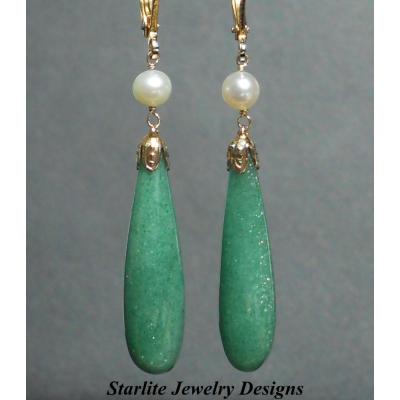
Posted in: Jewelry History
 Aventurine Earrings
Aventurescence refers to an optical effect demonstrated in a certain class of gemstones. It's created by tiny mineral platelets oriented in such a way as to create a shimmering, glittery effect. Three of the most popular aventurescent stones include aventurine, sunstone, and a synthetic glass gem called goldstone.
Aventurine Earrings
Aventurescence refers to an optical effect demonstrated in a certain class of gemstones. It's created by tiny mineral platelets oriented in such a way as to create a shimmering, glittery effect. Three of the most popular aventurescent stones include aventurine, sunstone, and a synthetic glass gem called goldstone.
The Mechanics of Aventurescence
As molten mineral deposits cool, they sometimes separate into two distinctive crystalline substances. Mineralogists call this phenomenon exsolution. This same process also results in chatoyancy (cat's eye) and asterism (star sapphires). (source) In the case of aventurescent gemstones, these inclusions form in plates of shimmering minerals, such as hematite, copper, pyrite, or goethite. These highly-reflective platelets reflect the light in such a way as to make the gem appear to shimmer and glow from within. Some experts liken the effect to the magical Christmas snow globes. Others say it appears as though these mesmerizing gemstones glow from within. Still others describe them as scattered on the inside with glitter.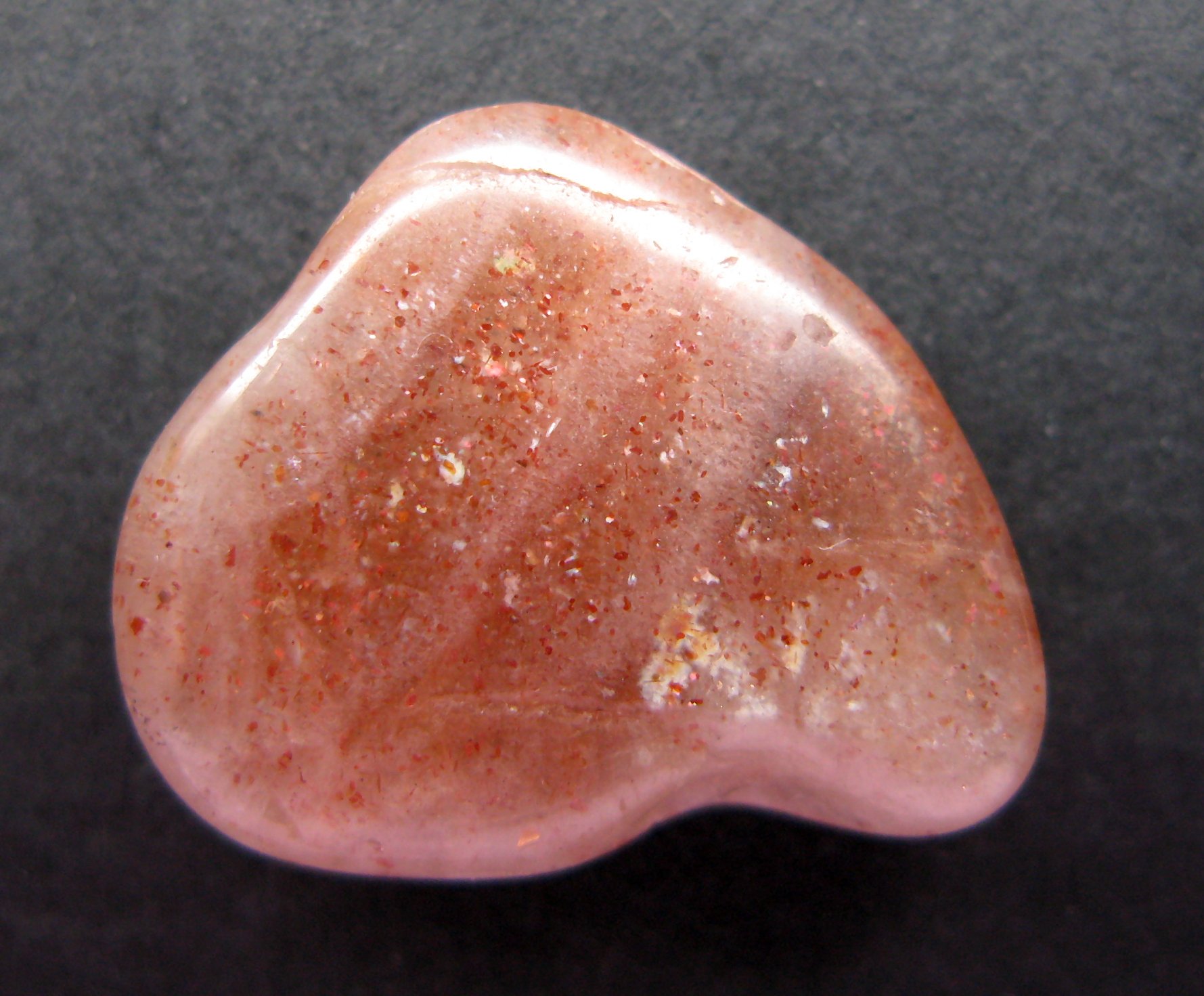 Sunstone from India
Sunstone from India
The Schiller Effect
Aventurescence is often used synonymously with the term 'schiller effect.' Mineralogists describe the schiller effect as the effect of light reflecting off the tiny platelets back to the eye. The term schiller in German means "to shine or twinkle." (source) This effect is the direct result of incandescent light hitting the micro-metallic platelet inclusions within the gemstone. The reflections make the stone sparkle from within, as though it has its own internal light source. Three different actions can elicit the schiller effect to maximum degree. First of all, by tilting the stone back and forth in the light you will see a glittering play of color and light. You can also move the light source back and forth across the surface of the stone to see it light up inside. Finally, you can move your head side to side to observe the shimmering effect. (source)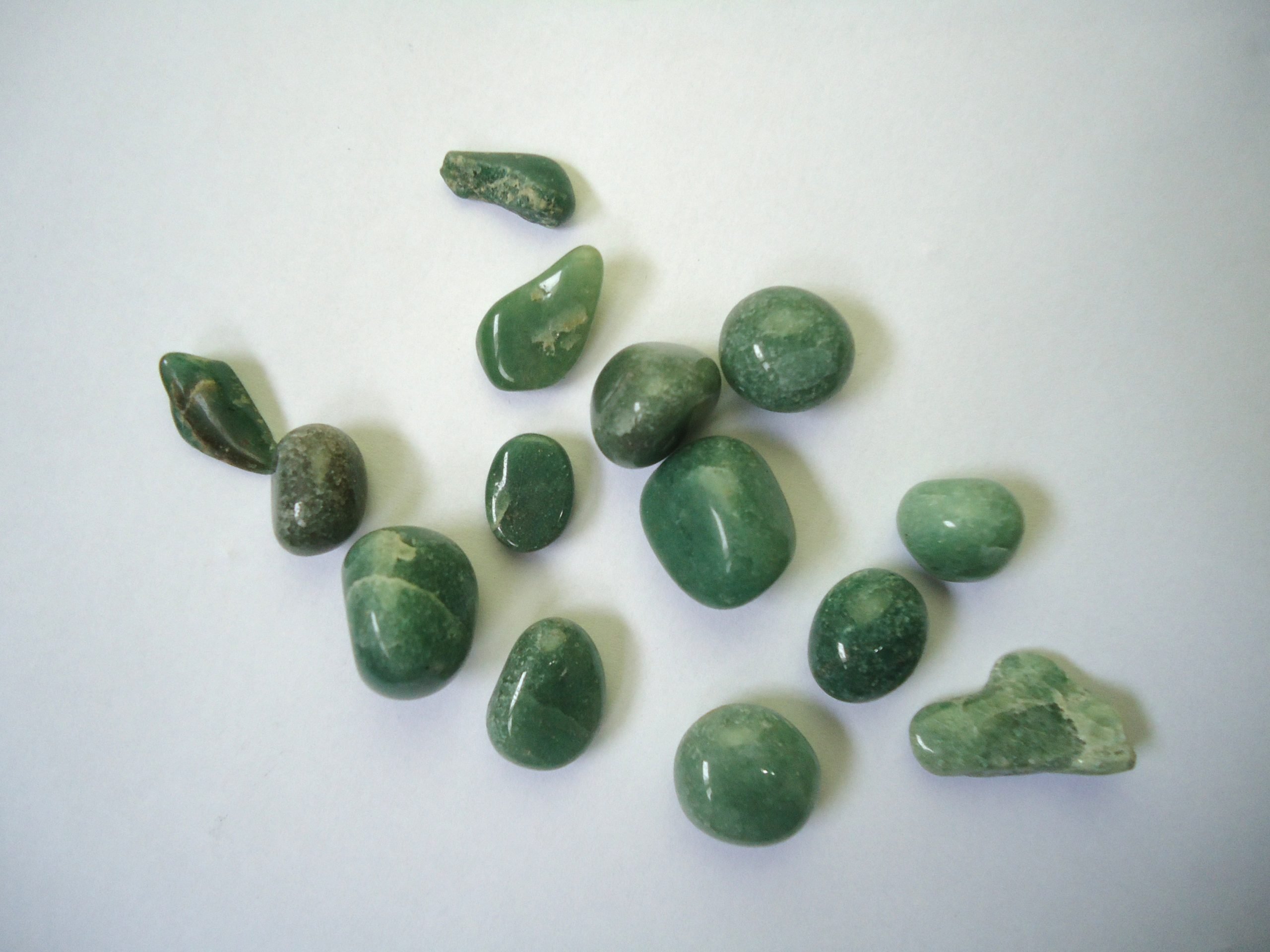 Aventurine pebbles
Aventurine pebbles
Popular Aventurescent Gemstones
Aventurine
Aventurine is the most popular aventurescent gemstone. I'm sure you've noticed the similarity in terms. According to Geology.com, both terms derive from the Italian word avventura, which means 'by chance.' Some experts believe that aventurine was actually named after goldstone, a synthetic glass first formulated by Italian glassmakers. (source) True aventurine is a variety of quartz crystal which most often contains a chromium-rich form of mica called fuchsite. Mica, of course, is a shimmering metallic mineral. And since chromium lends the mica a green color, these inclusions often lend a glimmering green glow to the gemstone. (source) Aventurine can also form with hematite, lepidolite, muscovite, and ilmenite. Each of these metallic inclusions radiate in different shades. Additionally, aventurine itself comes in various colors. The result is a wide range of all different color combinations, offering a literal rainbow of choices.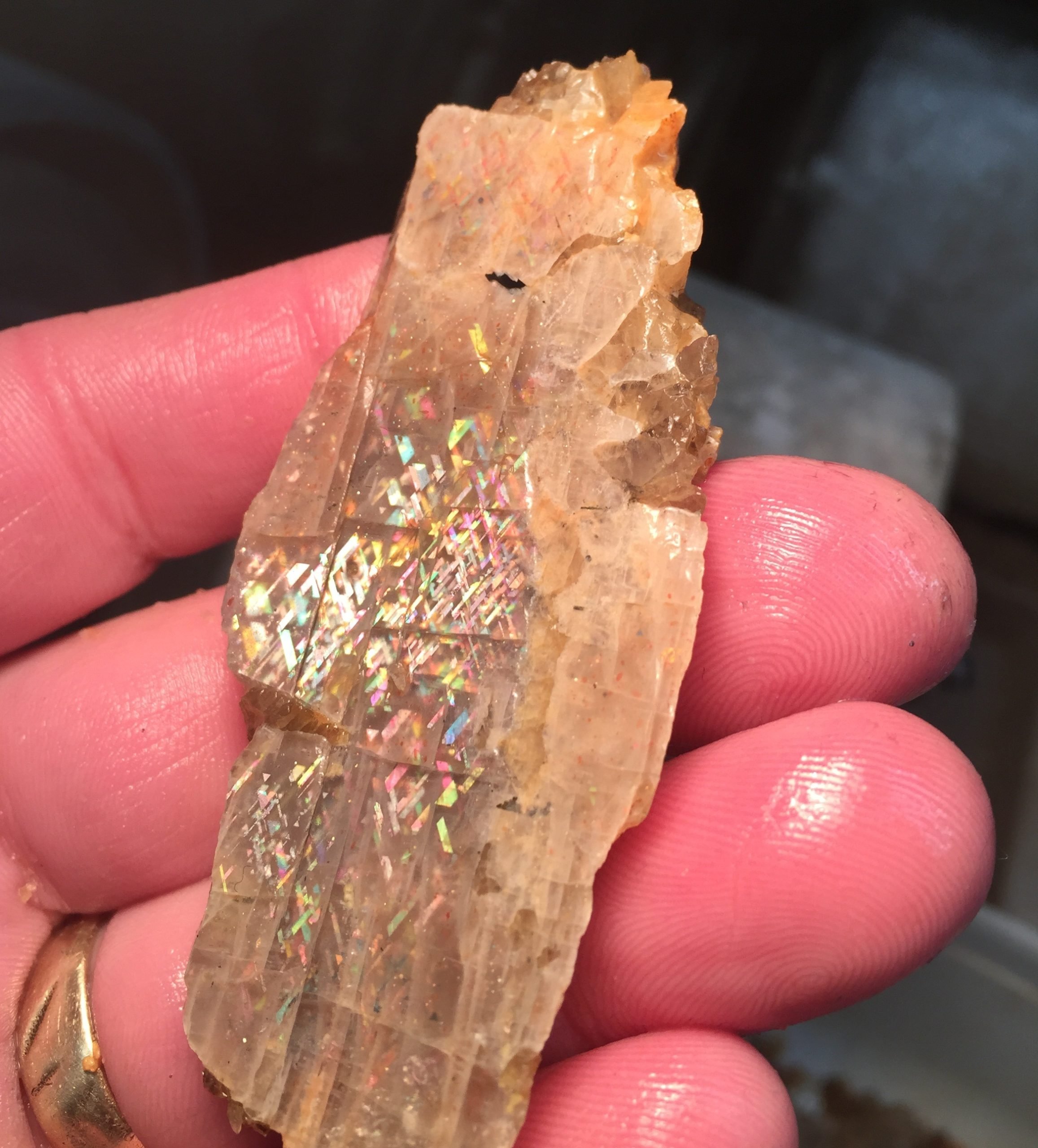 Rainbow lattice sunstone
Rainbow lattice sunstone
Sunstone
Sunstone is found in many places around the world, most prominently India and Oregon State. Specimens found in India typically contain hematite or goethite. (source) Those found in Oregon are the only feldspar sunstones that contain copper. (source1, source2) Depending on the copper content, Oregon sunstone ranges in color from clear to yellow to yellow-orange. This uniquely American gemstone also comes in shades of blue, red, pink, and green, and often unique combinations of these colors. (source) The inclusions sometimes form in what mineralogists call stripe schiller. This arrangement of copper inclusions results in the appearance of wide or narrow stripes on different planes within the crystal. (source) Other specimens demonstrate 'snowflake schiller,' in which the inclusions are scattered throughout the stone. This emits the snow globe effect I spoke of earlier.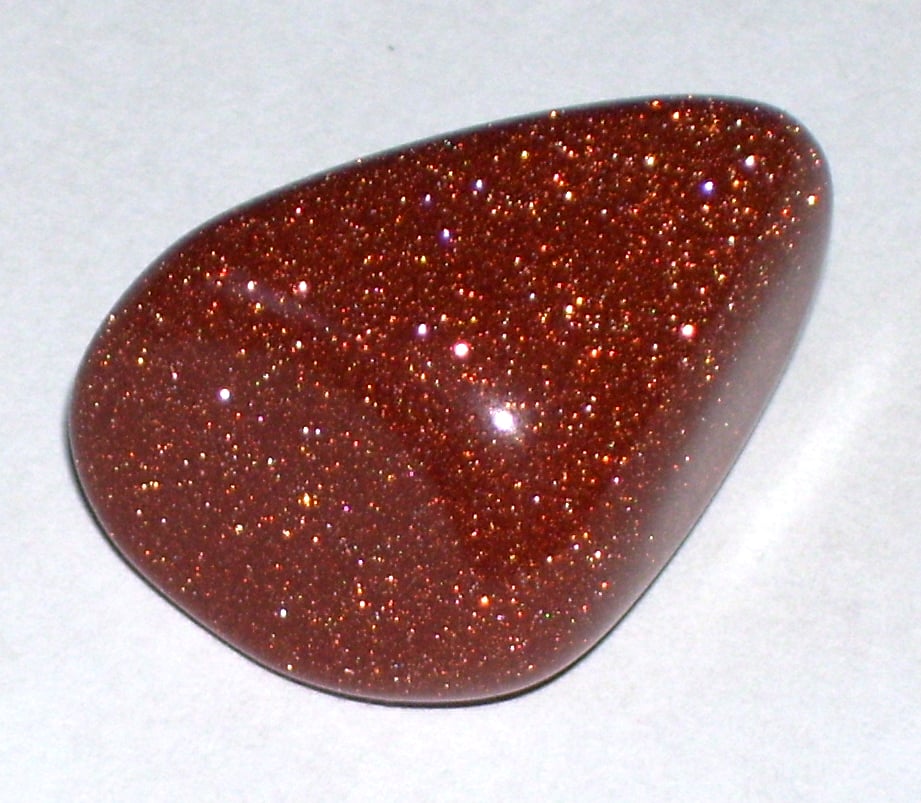
Goldstone
As I mentioned earlier, goldstone is a synthetic glass gem originally formulated by Italian glass makers in Murano, Italy, in the 1600s. "By chance," these glassmakers happened to synthesize the glittering effect of true aventurine in glass. (source) This resulted in both the term aventurscence AND this beautiful aventurescent glass called goldstone. Goldstone typically comes in shades of brown and brownish-orange. You can sometimes find it in green, as well as in purple or dark blue. The primary constituent used to create the schiller effect, as well as the body color of the glass in the orange and brown types, is coarse flakes of copper. (source) For green, glassmakers use chromium oxide. For blue, cobalt, and for purple, manganese. (source) Sometimes they also tint the glass slightly to enhance the overall color. In natural aventurine, the sparkling bits show up randomly and often in different sizes. However, with goldstone the inclusions are evenly sized and spaced throughout the body, in a fairly uniform distribution. (source) Regardless, the effect is the same - aventurescence. Which aventurescent stone is your favorite? ~Angela Magnotti Andrews4 years ago
41 view(s) 